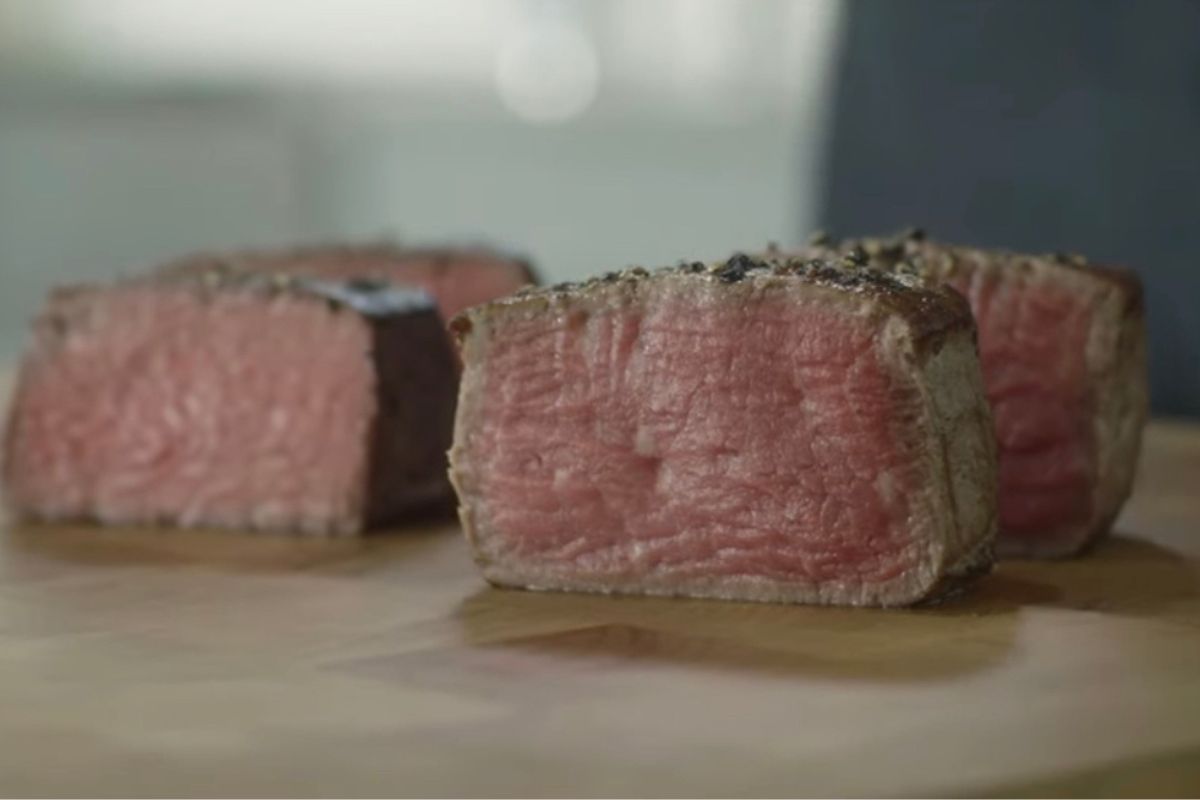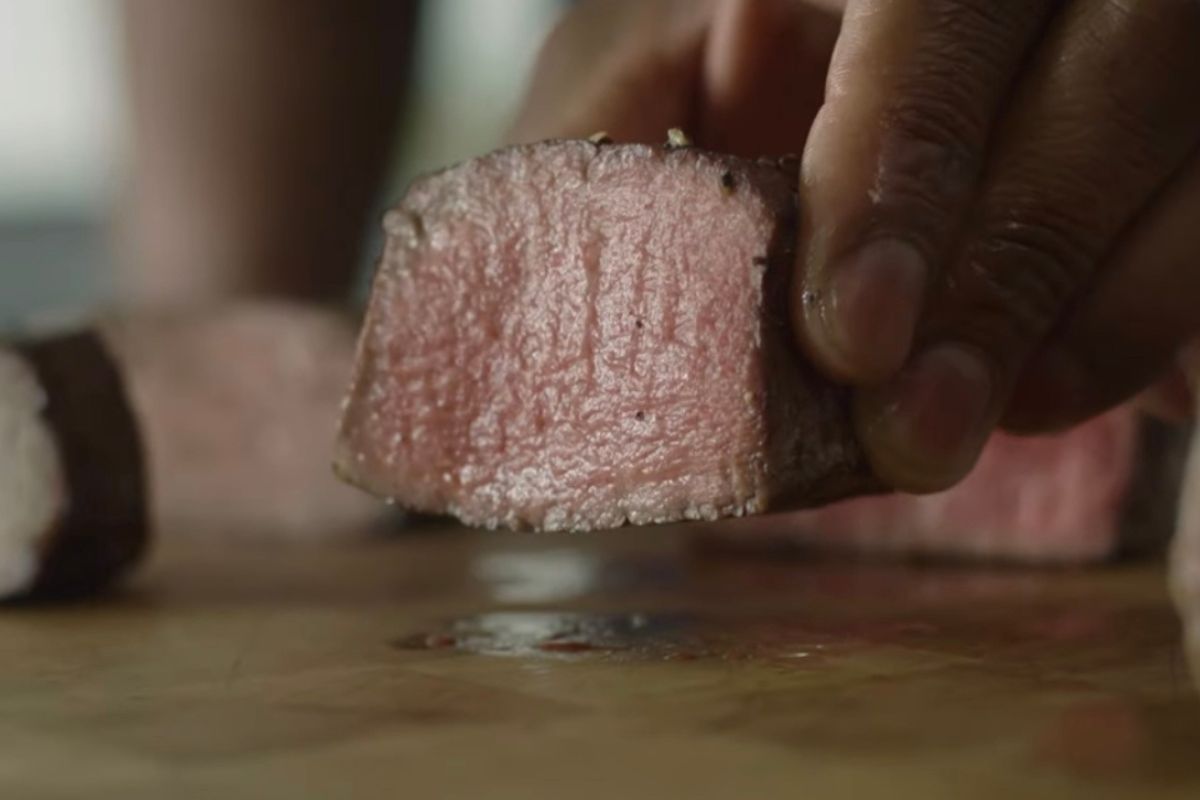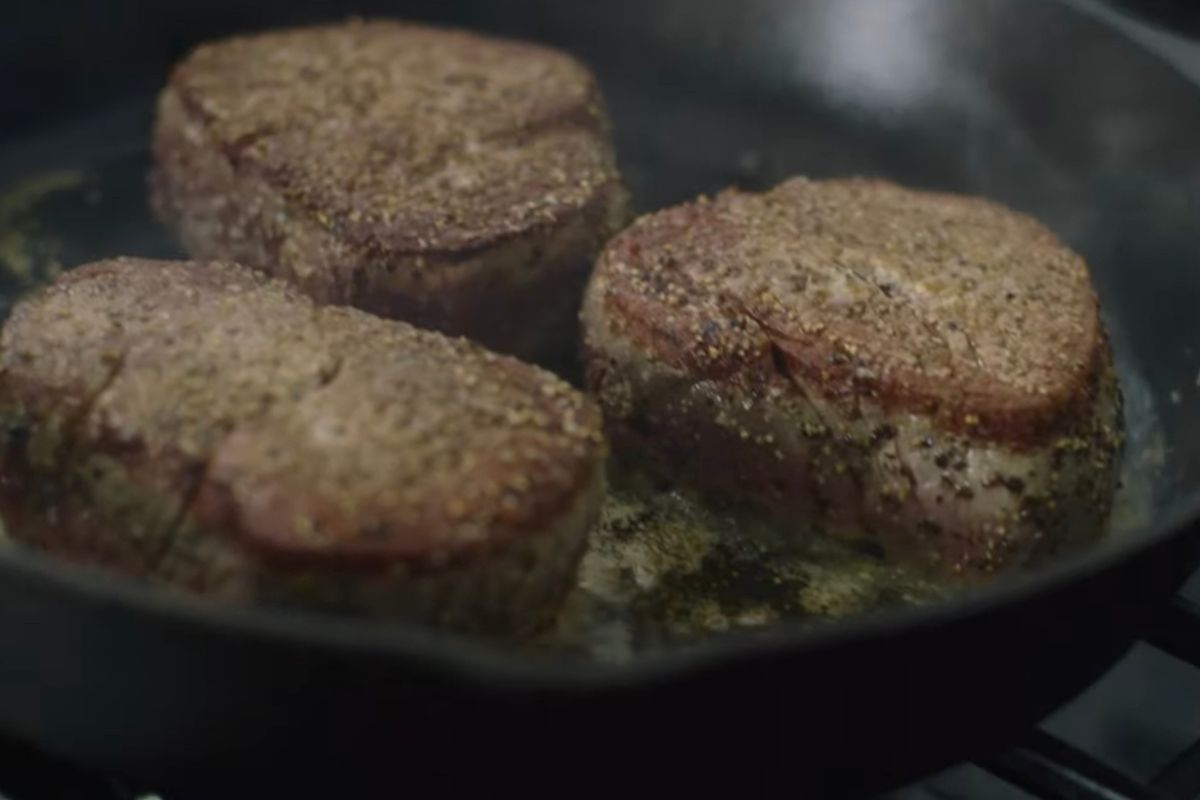Cooking a steak to perfection is said to be the true test of any home chef or barbecue master’s ability. Having that innate sense of when the meat is at the perfect point to remove from the heat is crucial.

So, how do good home chefs know when their steak is done? There are several ways to tell whether your meat is cooked properly or not. The USDA recommends using a thermometer to determine the internal temperature of your food.
When cooking meat, it’s important to know how long to cook it at a specific temperature. This information is critical because overcooking meat can result in dryness and toughness.
On the other hand, undercooking your meat could mean there are some harmful bacteria left alive in the meat which could have detrimental health effects for your dinner guests.
We can therefore determine that it’s very important to get your steak ‘doneness’ just right in order to satisfy your diners and keep them healthy. Thankfully, we’re here to help with this in-depth guide to knowing when your steak is done.
Stick around to the end to learn everything you need to know about cooking the perfect steak!
Steak Doneness Times And Temperatures
While there is still some debate about what the absolute perfect way to cook a steak is (rare, medium, well done, or whatever else people prefer), people everywhere can at least agree on the correct temperatures and times to cook a steak for certain levels of doneness:
-
- Blue: 1 minute (100°F/38°C)
-
- Rare: 2.5 minutes (125°F/52°C)
-
- Medium rare: 3.5 minutes (135°F/57°C)
-
- Medium: 4.5 minutes (145°F/63°C)
-
- Medium well: 5.5 minutes (150°F/66°C)
-
- Well done: 6.5 minutes (160°F/71°C)
The chart above shows approximate times and temperatures for different types of steaks.
It’s important to note that these times refer to how long the steak should be cooked on each side, on a grill, at 400°F.
Different Levels Of Steak Doneness
Now that we know a little more about how to cook a steak to each level of doneness, let’s take a closer look at how each one will turn out and how it tastes.
Blue
A blue steak is considered to be pretty much raw, so it tends to have a pretty different flavor to all other levels of doneness. It’s also extremely lean and tender. Blue steaks are usually served as an appetizer or starter.
If you want to serve a blue steak, make sure to use a high-quality cut like filet mignon or strip loin. These cuts are often used for serving blue steaks.
If you would rather save money and eat something healthier, try grilling a piece of beef sirloin instead. Sirloin has less fat than most fillets, but it’s still delicious.
Rare
Rarer steaks tend to be slightly pinker in color than blue steaks. They are also quite lean and tender, making them great for eating alone or as part of a salad.
Because they’re so lean, they require a lot of seasoning to taste good. Try adding salt and pepper to give it a kick. You can also add garlic, onions, or herbs if you’d like.
You can also marinate your steak before grilling to enhance its flavor. Marinating can be done by soaking the steak in oil, butter, vinegar, soy sauce, or any combination of those things.
Medium Rare
Medium rare steaks are somewhere between rare and medium, hence the name. They are not as lean as blue steaks, but they are still fairly tender. Medium rare steaks are best eaten on their own, but if you want to pair them with vegetables, go ahead.
They’re also great for salads. If you’re looking for a lighter option, try grilling a strip steak instead. Strip steaks are typically thinner than rib-eye steaks, which makes them easier to cook quickly without drying out.
Medium
Medium steaks are a bit firmer than medium-rare steaks. They are still very tender, but they have a bit more chew to them.
They are best paired with a starch such as rice, pasta, potatoes, or bread.
Medium Well
Medium well steaks are almost as firm as medium steaks, but they’re even juicier. Because they’re so juicy, they need to be cooked longer than normal steaks.
Try cooking this type of steak until it reaches 150°F / 66°C. This will ensure that the meat stays moist and flavorful.
Well Done
Well done steaks are the opposite of medium-well steaks. They’re dry and tough, but they’re also incredibly flavorful.
These steaks are perfect for pairing with starchy foods like mashed potatoes or polenta.
How To Test For Steak Doneness

There are a few different ways to check if your steak is done to perfection. Here are three quick methods:
Use A Thermometer
A simple method to check for doneness is by using an instant-read thermometer. Insert the probe into the thickest part of the steak and wait until it reads whatever temperature you’re aiming for, according to our temperature chart.
One thing you should bear in mind is that the steak will continue to rise in temperature slightly, even after you take it off of the grill. Therefore, you should remove it from the heat just before it reaches the desired temperature.
Use A Timer
Another method to check for doneness is to use a timer. Set the timer for 1-6.5 minutes (depending on how done you want your steak to be) and insert the thermometer into the center of the steak.
When the timer goes off, flip the steak over and reset the timer for the same period of time.
With this method, you’ll never confuse yourself into thinking that your steak is perfectly cooked before it actually is. Simply rely on the timer to let you know when to take it off of the heat and trust it.
Look At It
Finally, another way to check for doneness is by looking at it. At different levels of doneness, there are plenty of telltale signs that you can work off.
At any level of doneness, you want to see a completely seared, crusty exterior. However, the differences lie when you cut inside the steak.
For example, the less done you want the steak to be, the redder the center should be. A medium steak should be slightly pink in the center and a well-done steak should have no pink visible at all.
What’s The Best Level Of Doneness For A Steak?
While there’s no right or wrong answer to what the best level of doneness is for a steak, there is certainly a most popular option. After all, everybody is entitled to their own tastes and the most popular option might not be the best for everyone.
However, if you don’t already have a preferred level of doneness, we recommend that you aim for a medium-rare steak since it has the most flavor and tenderness.
Medium-rare also takes a pretty average amount of time to reach its final temperature, so it’s ideal for those who like their food hot and fast.
However, if you’d rather enjoy a more flavorful steak, go with medium or medium-well. These two options offer great taste without being too tough and chewy. They’re perfect for people who prefer their meat to be a little softer.
Top Tips For Cooking Steak
It’s all well and good knowing the correct times and temperatures for cooking steaks, but there’s a lot more to getting it right than just that.
Here are some top tips for cooking steak:
-
- Always buy steaks that are at least one inch thick. If they’re thinner than this, they won’t cook evenly and could end up overcooked.
-
- Never put frozen steaks directly onto the grill. Instead, thaw them out first. This helps prevent them from sticking together and makes it easier to turn them over.
-
- When grilling, always place the steak on a rack set above the coals. This prevents flare-ups which can cause the steak to burn.
-
- Once the steak is cooked, rest it for 5 minutes before serving. This allows the juices to redistribute throughout the meat.
-
- Serve steamed vegetables alongside your steak. Not only does this add color and variety to your meal, but it also helps to keep your steak moist.
Why Should I Rest My Steak After Cooking It?
Resting your steak after cooking it will help ensure that it stays juicy and delicious for longer.
The reason why is that as soon as you remove your steak from the heat, the moisture begins to evaporate. As this happens, the steak starts to dry out.
To combat this problem, simply allow your steak to sit for five minutes before slicing it. During this time, the juices will redistribute back into the meat, keeping it juicier and tastier for longer.
The Best Way To Cook Beef Tenderloin

The beef tenderloin is one of the most popular cuts of beef because it’s incredibly versatile. You can cook it whole, sliced up, rolled up, stuffed, grilled, broiled, pan-fried, sautéed, baked, braised, stewed, or barbecued.
It’s a very lean cut of beef, making it easy to overcook. This means that you need to pay close attention to the cooking process. If you do not follow these instructions correctly, then you may end up with dry, tasteless meat.
To keep your tenderloins moist while they’re cooking, make sure to:
• Keep them covered with foil during grilling and baking.
• Let them rest after cooking.
• Cut away as much fat as possible.
How Long Does It Take To Cook A Beef Tenderloin?
While the exact cooking times vary depending on the size and thickness of the tenderloin, generally speaking, it takes about 40-45 minutes per pound to fully cook a tenderloin.
This time does include searing it on the stovetop, as well as finishing it off in the oven. Make sure you do your research about how to perfectly cook a beef tenderloin because it’s a little different from the process of cooking a regular steak.
How Much Time Should I Allow My Beef Tenderloin To Rest After Cooking?
When you remove a piece of meat from the oven, you want to allow it to rest for 5 to 10 minutes before slicing it. This allows the juices to redistribute throughout the meat and makes it easier to slice.
You can also use this time to finish off the sauce you made earlier.
This resting period is especially important for thin steaks such as filet Mignon. Since they contain a lot of connective tissue, they require longer to cook than other types of meat.
How Can I Prevent Tough Meat From Being Dry And Chewy?
One of the biggest problems with cooking a tenderloin is that it tends to dry out quickly. This causes the meat to become hard and chewy.
This happens when the surface area of the meat gets exposed to air. The solution is simple; just wrap it in aluminum foil. When you cook it, the heat will penetrate the foil and warm the inside of the meat.
If you are using a grill, place the tenderloin directly over the coals. If you are using an oven, put the foil-wrapped tenderloin on a rack set above a shallow roasting pan filled with 1 inch of water.
Conclusion
Hopefully, you now know everything you need to cook the perfect steak and impress your dinner guests. Stun them all but cooking each of their steaks to their own individually desired levels of doneness, just like in a professional restaurant!
- Is Blue Steak Safe To Eat? - May 7, 2022
- How To Tell If Your Bratwurst Sausage Is Cooked - May 7, 2022
- The Internal Temperature For Tri Tip When Done - May 7, 2022








